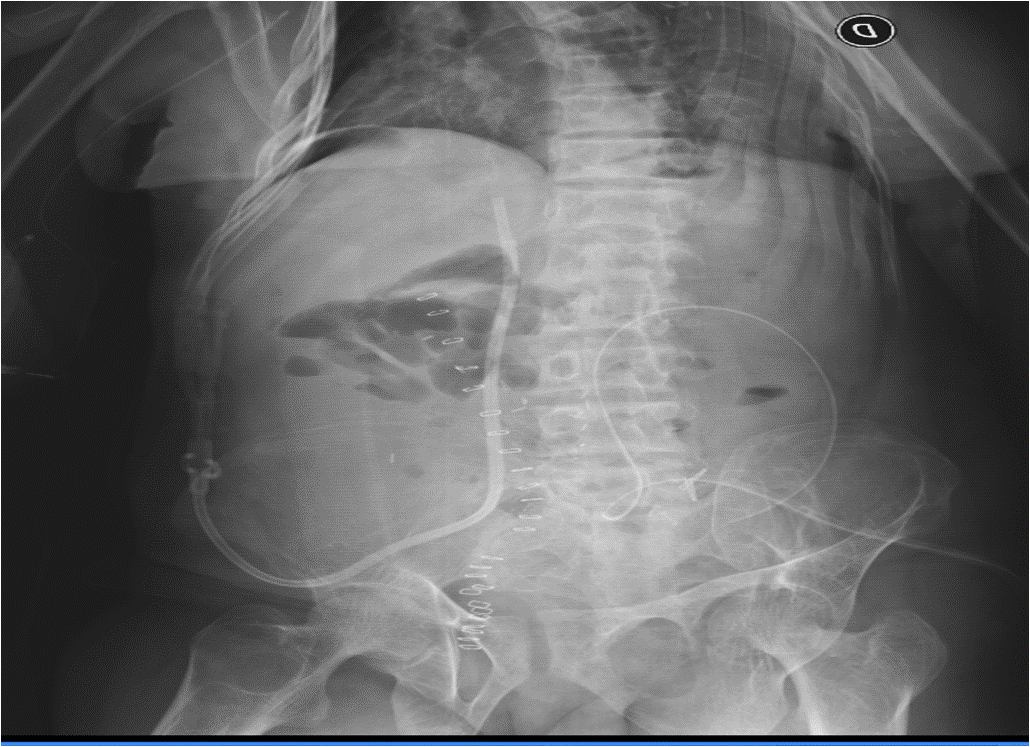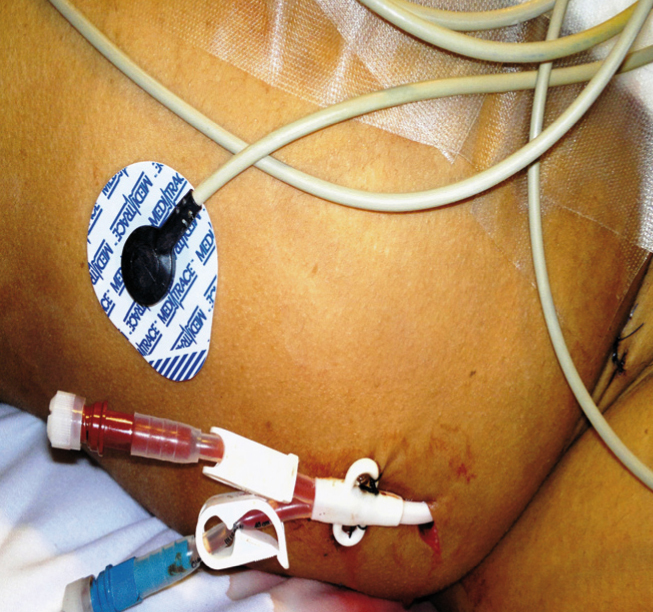To the Editor:
The availability of a vascular access is essential for adequate haemodialysis. Vascular access is therefore the Achilles’ heel of this treatment. When patients present venous access depletion, either for the creation of an arteriovenous fistula, a vascular prosthesis or the placement of a tunnelled catheter, we must resort to a change of dialysis modality if possible, otherwise unconventional venous access routes must be considered.1,2
We report the case of a patient with stage 5D chronic kidney disease (CKD) with exhausted accesses in whom we placed a tunnelled catheter transovarially.
CASE REPORT
Our patient is a 27-year-old female with CKD secondary to renal hypoplasia diagnosed at 2 years of age. At 9 years of age she had stage 5D CKD and received a living related donor kidney transplant; eight years later, she lost transplant function due to chronic rejection and had to begin a tri-weekly haemodialysis treatment. There were multiple complications due to obstructions and infections of the vascular access points for haemodialysis. Ten years later, she was transferred to our institution due to exhaustion of vascular accesses. An angiography of the upper and lower limbs and vena cava was performed, which showed thrombosis in both jugular and subclavian veins and the brachiocephalic artery, as well as in both femoral and iliac veins. Without the possibility of a living related donor transplant, it was decided to start peritoneal dialysis and register her on the emergency waiting list to receive a deceased donor kidney transplant. A catheter was introduced for peritoneal dialysis and this treatment was started immediately using a cycler and a suitable dialysis dose was achieved with good tolerance.
Due to the patient’s vascular condition, the transplanted kidney required an aortocaval vascular anastomosis, which interfered with the peritoneal access and, therefore, the patient lost the ability to continue with peritoneal dialysis in the period following transplantation until the recovery of function. The requirement for a conventional access route was therefore considered at the time of transplantation.
When a deceased donor kidney became available, a catheter was placed in the ovarian vein for haemodialysis during surgery and after transplantation. The right ovarian vein was dissected (it was dilated due to iliac vein obstruction) and a 40cm long, 14.5 French diameter Quinton Permcath® Dual Lumen tunnelled catheter was inserted. A retention suture was placed on the vein as far as the inferior vena cava. The placement was confirmed by radiography and subcutaneous tunnelling was performed on the abdominal wall (Figure 1 and Figure 2). The procedure was well tolerated. We began anticoagulation with sodium heparin 6 hours after surgery. Forty-eight hours after the kidney transplantation, the patient required her first dialysis treatment, which was performed via the catheter with optimal blood pump flow and without complications. This enabled dialysis treatment to be performed until recovery of transplant function.
DISCUSSION AND CONCLUSIONS
We found no reports in the literature of cases in which this access route was used for the placement of catheters for haemodialysis. The use of other unconventional routes1,2 for vena cava access, such as the transhepatic route3,4 or the translumbar route5 in this patient would have required a pre-transplant procedure under angiographic and ultrasound control for accurate vascular puncture and access. This patient underwent peritoneal dialysis without complications until the time of transplantation. The use of the ovarian vein route offered the possibility of a quick and accessible approach.
The transovarian route may be considered to be another unconventional alternative for catheter use in females with exhausted haemodialysis accesses.
Conflicts of interest
The authors declare that they have no conflicts of interest related to the contents of this article.
Figure 1. Radiographic image showing the route of the tunnelled catheter, which enters the inferior vena cava through the ovarian vein.
Figure 2. Tunnelled catheter emerging at the right iliac fossa.










